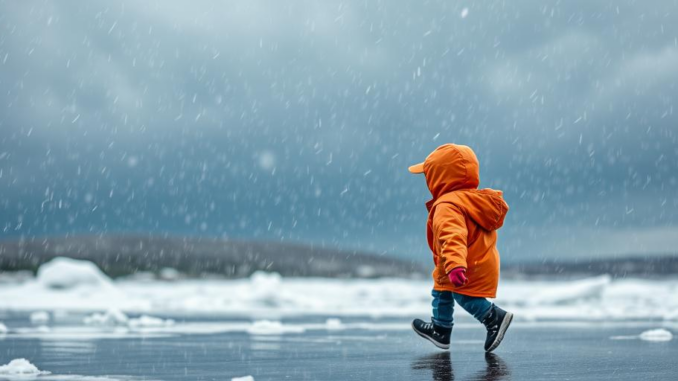
Summary
This article discusses the alarming trend of increasing weather-related pediatric fatalities. It explores contributing factors and emphasizes the need for better disaster preparedness and response systems. Finally, it highlights the vulnerability of children to extreme weather events and advocates for proactive measures to ensure their safety.
Reliability and uptime matter in healthcare TrueNAS provides 24/7 support when it counts.
Main Story
Weather’s Growing Threat to Children
Recent research reveals a disturbing trend: weather-related fatalities constitute a growing proportion of overall childhood deaths. This alarming discovery necessitates increased awareness and proactive strategies to protect children from the escalating dangers posed by extreme weather. Between 2001 and 2021, weather events resulted in 1,423 pediatric deaths in the United States. Although the absolute number of fatalities remained relatively stable, the proportion of all-cause pediatric deaths linked to weather events increased significantly. This trend emphasizes the growing impact of weather-related disasters on children’s lives.
Factors Behind the Rising Threat
Several factors contribute to this concerning trend. Children possess unique physiological vulnerabilities, making them more susceptible to heatstroke, hypothermia, and respiratory problems caused by air pollution from events such as wildfires. Their limited ability to recognize and react to danger, coupled with their reliance on caregivers, further increases their risk during weather emergencies. Moreover, inadequate access to timely medical care and evacuation resources intensifies the challenges faced by children in disaster-prone areas.
The Impact of Climate Change
Climate change acts as a threat multiplier. The increasing frequency and intensity of extreme weather events, driven by climate change, exacerbate these vulnerabilities. More frequent and intense heatwaves, floods, wildfires, and severe storms heighten children’s exposure to dangerous conditions, leading to more fatalities. The changing climate underscores the urgent need for improved disaster preparedness and response systems specifically designed to protect children.
Protecting Our Children: A Call to Action
Addressing this challenge requires a multi-pronged approach. Firstly, improving health system infrastructure for pediatric disaster planning and response is crucial. Establishing Pediatric Disaster Care Centers of Excellence and equipping hospitals with the necessary resources to handle pediatric emergencies during disasters is essential. Expanding access to specialized pediatric care in disaster zones ensures that children receive the appropriate medical attention they require during and after extreme weather events.
Community Preparedness and Education
Educating communities and families about disaster preparedness is another critical step. Equipping families with the knowledge and resources to prepare for and respond to weather emergencies empowers them to protect their children effectively. Public awareness campaigns focused on weather safety for children can help parents and caregivers take appropriate precautions, such as creating emergency plans, assembling disaster kits, and knowing evacuation routes. Educational programs in schools can also teach children how to react in different weather-related emergencies.
Mitigating Climate Change’s Impact
Finally, addressing the root cause of the problem — climate change — is essential for long-term solutions. Investing in mitigation strategies to reduce greenhouse gas emissions and slow the pace of climate change helps to lessen the frequency and severity of extreme weather events. Supporting policies and initiatives aimed at creating more sustainable and resilient communities minimizes the impact of these disasters on children. By working together, we can create a safer environment for all children and protect them from the escalating dangers of weather-related disasters. This information is current as of February 16, 2025, and may change with future research.


The emphasis on community preparedness is vital. Could incorporating child-specific drills in schools and neighborhoods, tailored to different age groups, significantly improve children’s responses during weather emergencies?
That’s a fantastic point! Child-specific drills, tailored by age, could definitely improve responses. Perhaps simulations focused on separation from caregivers or understanding specific weather risks in their area could be incorporated. Sharing best practices for these drills could make a big difference! What other specific drill ideas do you think would be most effective?
Editor: MedTechNews.Uk
Thank you to our Sponsor Esdebe
Weather-related pediatric fatalities are indeed alarming! Perhaps we should equip kids with tiny weather-predicting devices, like wristwatches that scream “Tornado incoming!” Or maybe just teach them to outrun a hurricane. I’m kidding (mostly)! Seriously though, preparedness is key.
Thanks for your comment! Preparedness really is key. Thinking about equipping kids with knowledge is vital. It sparks the imagination for what is possible for younger generations in times of disaster. Perhaps virtual reality simulations tailored to various age groups could really help them learn in a safe environment!
Editor: MedTechNews.Uk
Thank you to our Sponsor Esdebe
Weather-related fatalities are up? Guess kids these days need a “Survive the Apocalypse” elective in schools. Forget dodgeball, let’s teach them how to build a fort out of fallen trees and purify rainwater!